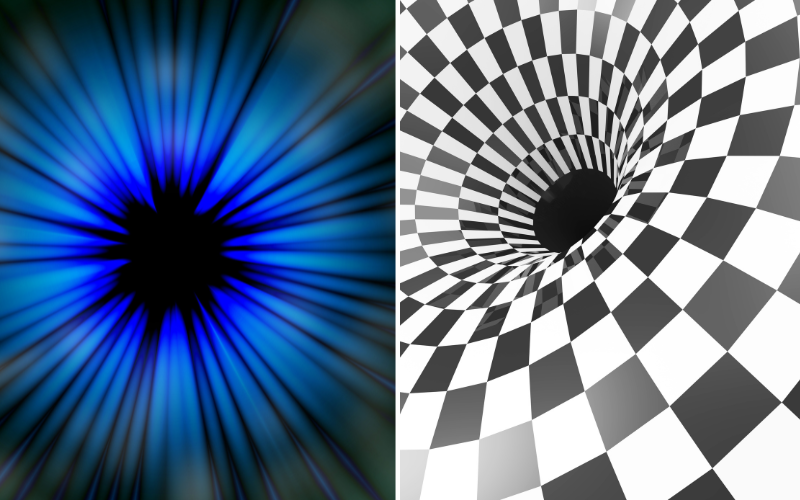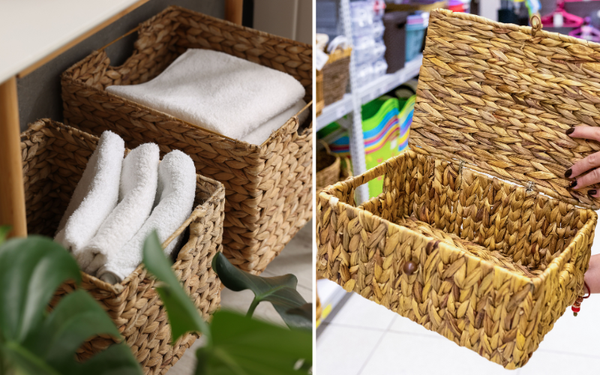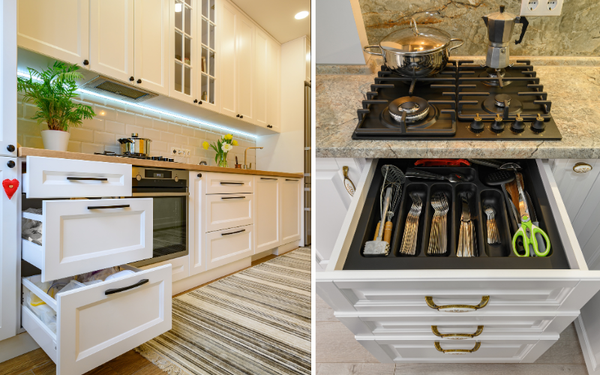Are you wondering why do we use rugs in interior design? It’s simple: they define our spaces, insulate against cold, reduce noise, and bring together our aesthetic vision. This article peels back the layers of how rugs contribute to our homes’ functionality and beauty without overshadowing your unique style. Dive in to grasp the essence of why rugs are more than decorative pieces, but essential elements in creating harmonious, practical, and inviting living spaces.
Key Takeaways
- Rugs are integral to interior design, offering both functional and aesthetic benefits by defining spaces, adding warmth, and creating visual interest.
- Beyond their beauty, rugs provide practical advantages such as floor protection, noise reduction, and improved room acoustics, supporting a comfortable living environment.
- When choosing rugs, consider layering for added depth, select the right size for furniture alignment, and opt for easy maintenance materials to align with modern lifestyle demands.
Defining Spaces Within Your Home
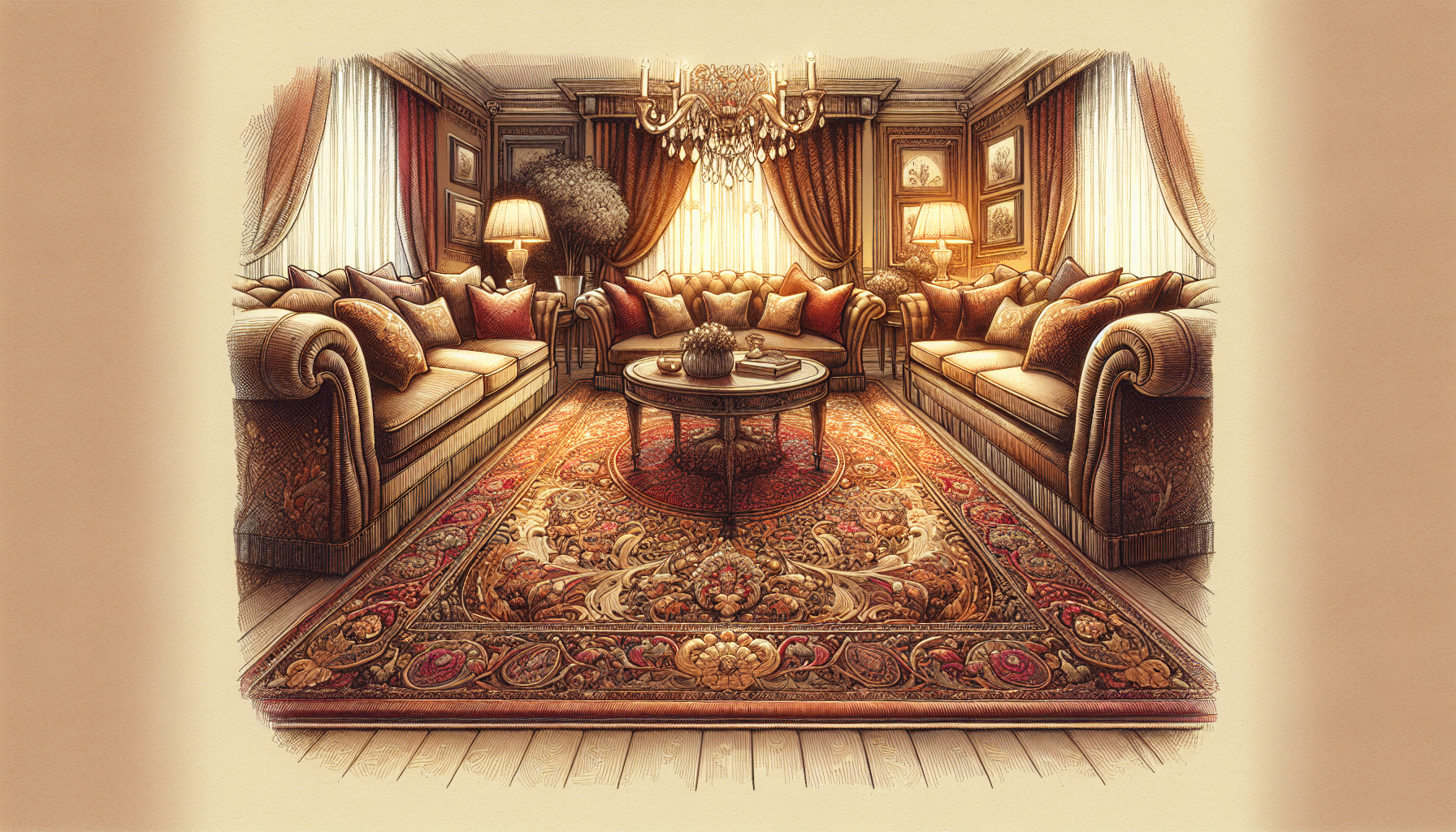
Imagine walking into a large, open-plan living room. Without distinct boundaries, the space might feel overwhelming and devoid of purpose. Enter the humble area rug. Rugs provide structure and a sense of purpose within a room, helping to define and anchor spaces. In an open-plan interior, rugs can visually separate a living area from a dining room or distinguish a study area in a bedroom. They’re not just a part of your home decor; they’re a crucial element of your interior design.
Strategically placing rugs in your home can have several benefits:
- They contribute to a balanced room setting and enhance conversation areas.
- A well-placed rug can make a neutral space feel intimate and cozy.
- Rugs can define spaces within your home, making smaller rooms feel more organized and preventing them from feeling cramped.
So, whether you’re trying to make your living room feel cozier, or your dining space more defined, remember the essential role of rugs. They’re not just a decorative accessory, but a tool to create distinct areas and make your living spaces feel more inviting.
Adding Warmth and Insulation
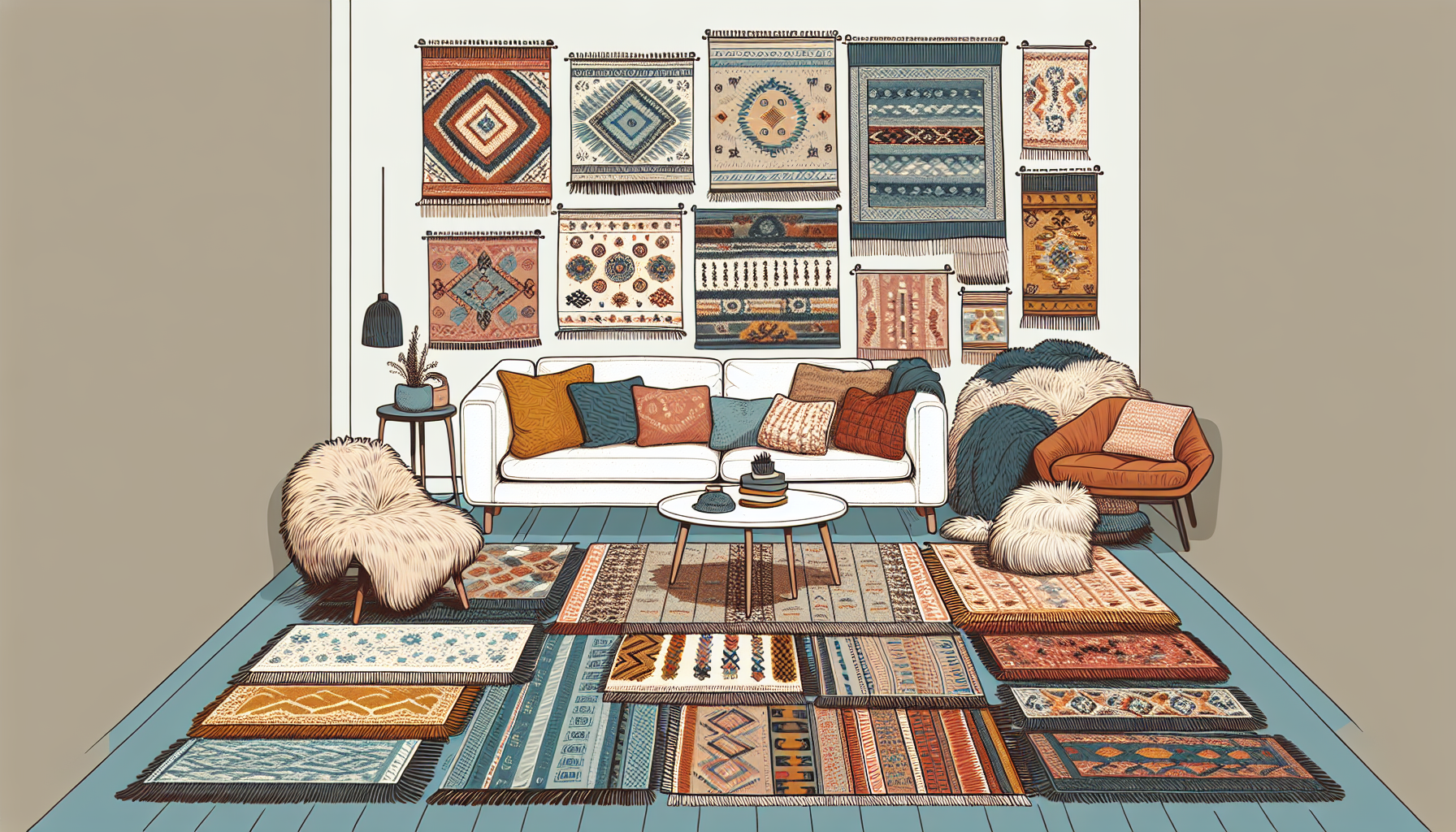
Stepping onto a cold floor first thing in the morning can be quite a jarring experience, wouldn’t you agree? Rugs act as a barrier between your feet and the cold floor, retaining heat and providing insulation to the room. Thick rugs with air pockets between fibers, especially those made of wool, are highly effective at insulating floors.
Covering large spaces or using multiple rugs in a home can significantly reduce heat loss. For an extra cozy touch, consider using insulated rug pads made from materials like wool or memory foam to enhance a rug’s insulation properties. Heated or thermal rug mats can also be placed under traditional rugs to serve as additional heat sources in a room.
Beyond their practical benefits, rugs contribute to the comfort of a living space by being softer than hardwood or tile floors and absorbing the impact of footsteps. They add a sense of warmth through their texture, making the room feel more inviting. So, the next time you step onto a plush rug in your living room, take a moment to appreciate not just its aesthetic appeal, but also the warmth and insulation it offers.
Rugs as Sound Dampeners
Have you ever noticed the echo in a room with hard flooring surfaces? Or the noise level in a space with tiled floors? Rugs can help with that. Yes, rugs act as effective sound dampeners, reducing noise levels and echoes in rooms. This functionality is particularly handy in homes with kids or pets, where the noise level can quickly escalate!
By acting as effective sound absorbers and diminishing echoes, rugs assist in dampening noise levels in rooms, particularly in reducing sound from surface contact, such as walking or items dropping. Certain rugs even come with specialized acoustic-optimized backings and designs, curbing noise from surface contact and impact sound transmission to lower floors.
The benefits of rugs include:
- Providing an acoustic barrier that enhances room acoustics, creating a quieter and more peaceful environment
- Making spaces in homes and offices more intimate
- Taming echoes in living rooms
- Reducing noise in home offices
So, if you’re looking to enhance the acoustics of your space or create a quieter environment, a well-placed rug could be the perfect solution.
The Aesthetic Impact of Rugs
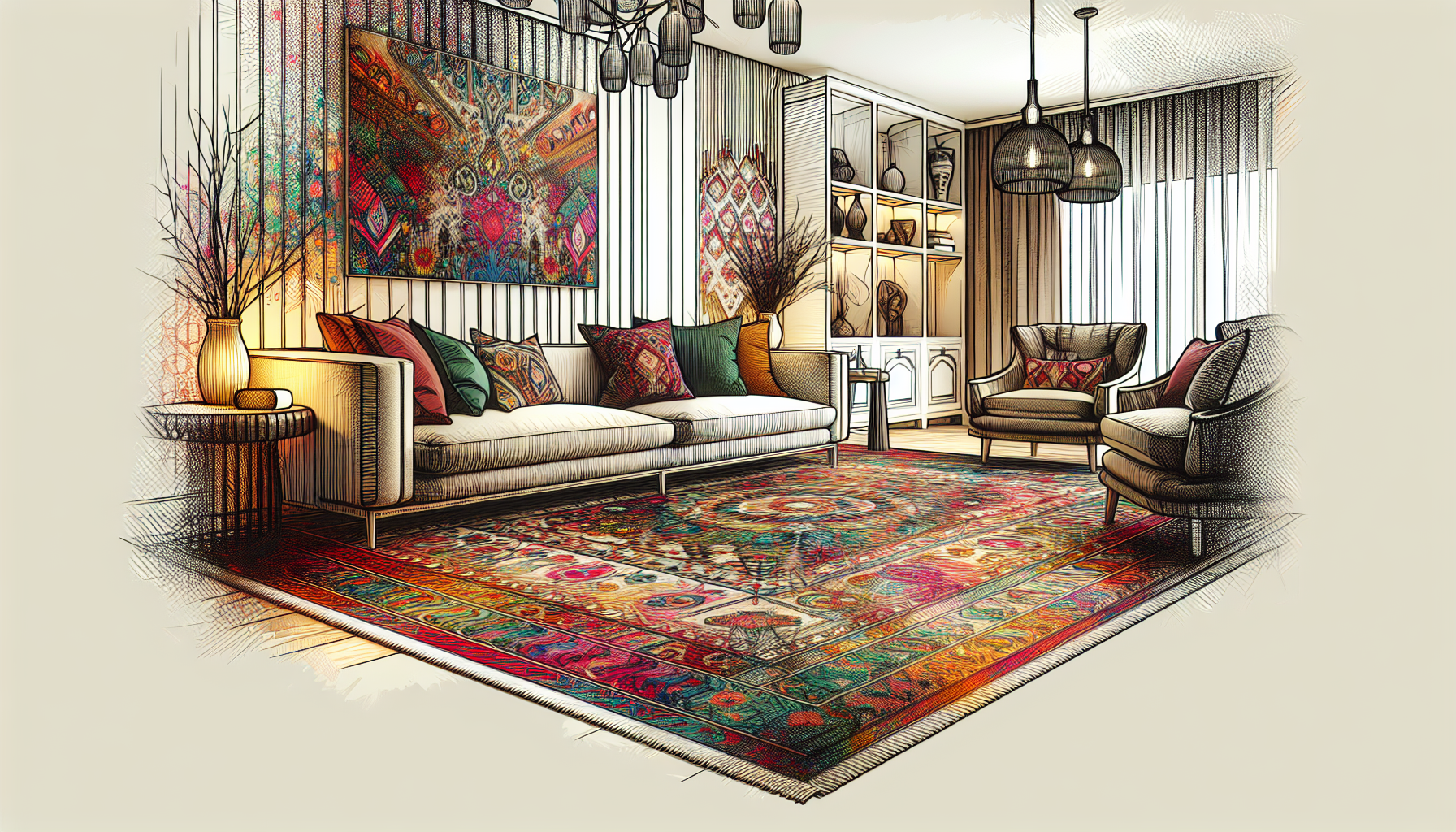
The aesthetic impact of rugs is significant. They introduce color, texture, and patterns to a room, acting as a pivotal decorative accessory. For instance, a bold, patterned rug can act as a statement piece in a minimalist living room, while a neutral, textured rug can add warmth to a contemporary dining space.
Rugs serve as a unifying element that brings together different design aspects, such as furniture and decor items, creating a cohesive look. The introduction of colors, patterns, and textures through rugs offers flexibility in decor changes and allows personal style to be reflected in the living space.
Ever wondered how to make a small room appear more spacious? Here are some tips:
- Use a light-colored or large center rug to create the illusion of more space.
- Avoid using sectional rugs or those with bold patterns, as they can make a room feel more intimate.
- Consider using different shapes of rugs, such as round or square, to add an extra dimension to the room’s design.
These tips can help you create a more spacious and visually appealing room.
Updating your home decor with home decor rugs is also a cost-effective method, allowing for easy accommodation of the latest design trends.
Layering Rugs for Depth and Interest
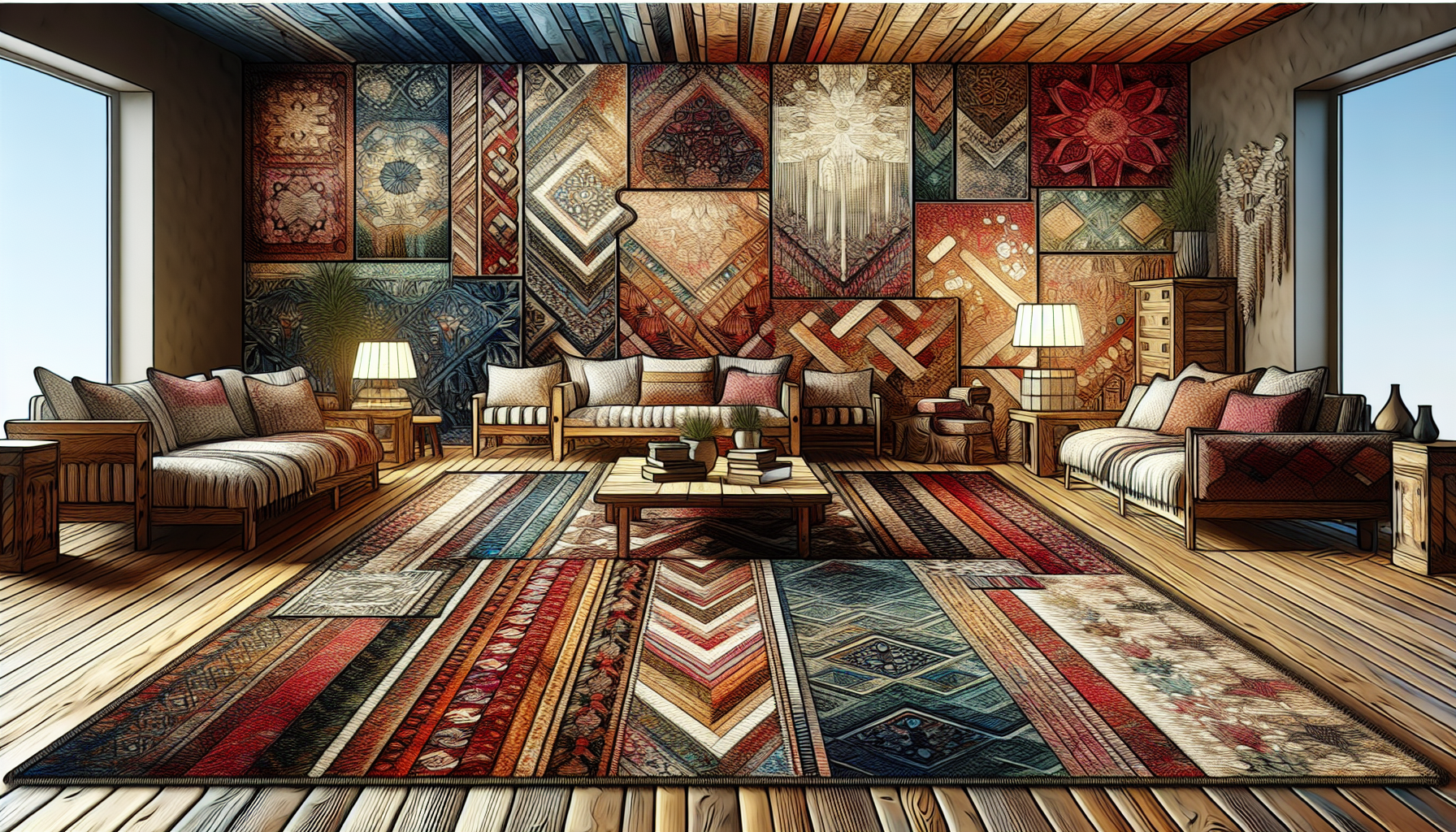
Layering rugs is a design technique that’s been gaining popularity in recent years. By using patterns and varying textures, it introduces a new level of depth and interest to a room’s design. This isn’t just about piling rugs on top of each other, though. Maintaining proportion between layered rugs is critical, with the top rug often being two-thirds the size of the bottom one.
Layered rug arrangements can complement various interior design styles, including farmhouse, modern, industrial, and shabby chic. But what makes a good top layer? Sheepskin and cowhide rugs are stylish choices for the top layer in a rug layering setup, adding both texture and a sense of luxury.
So, next time you’re looking to add some depth and interest to your room’s decor, why not try layering rugs? Whether you’re after a boho-chic vibe or a cozy farmhouse feel, a well-layered rug setup could be just the ticket.
Practical Protection for Your Floors
While rugs are a delightful addition to any room in terms of aesthetics, they also serve a more practical purpose: protecting your floors. Area rugs act as a protective barrier against wear and tear on underlying flooring surfaces. They are particularly beneficial for hardwood floors, which are prone to scratches and scuffs.
Quality rug pads are essential to prevent color transfer and damage to hardwood floors. Choosing durable rugs with a stable pad is key to withstanding high traffic without harming the floors. Using runner rugs in hallways, entryways, and near the garage can effectively protect wood flooring from scratches and scuffs.
Even your entryway can benefit from a rug. Entryway mats serve to absorb water and collect dirt, thereby shielding floors from potential damage. So, while rugs certainly add to your home’s visual appeal, they’re also an essential element of practical floor protection.
Rug Size Matters: Fitting Your Space
Choosing the right rug size is more of an art than a science. You might think that you should match the rug size to the room size, but that’s not always the case. The most crucial factor in choosing a rug is not the room size but the placement and size of furniture, determining boundaries and sizes of distinct areas.
The size of a rug typically needs to cover the seating area with a uniform margin around the furniture to maintain proportion and create a cohesive look. Standard rug sizes are designed to correspond to common room dimensions and furniture layouts, making it easier to choose the right rug size.
A handy tip for visualizing how a rug will fit with your existing decor, especially if you have wall to wall carpeting, is to use masking tape to outline potential rug dimensions on the floor. For rugs placed under couches, the rug should either accommodate the entire couch or at least extend under the front legs to create a unified aesthetic.
So, remember, when it comes to finding the perfect rug, size isn’t just about covering floor space; it’s about fitting your space in harmony with your furniture, such as a coffee table, and decor.
Easy Maintenance for Busy Lifestyles
In today’s fast-paced world, easy maintenance is a must for any home decor element. Luckily, rugs are not only easy to clean but also convenient to maintain due to the fibers which make vacuuming straightforward, removing dust effectively when done on a weekly basis. But did you know that rugs also play a significant role in improving indoor air quality? By trapping allergens within their fibers, rugs help to clean the air in your home.
Selecting darker colored and easily cleanable rugs can enhance the practicality of interior spaces, especially those susceptible to frequent spills and stains. Using rug pads underneath rugs contributes to easier maintenance by adding cushioning, reducing the chance of slippage, and safeguarding both the rug and the flooring from damage during cleaning.
While regular vacuuming is integral for rug upkeep, it is also recommended to conduct a deep cleaning of rugs at least once or twice a year to ensure their longevity and hygienic state. So, if you’re after home decor that’s both stylish and easy to maintain, rugs might just be the perfect choice.
Transforming Rooms with Rugs
Rugs are more than just floor coverings; they have the power to transform rooms. A room’s ambiance can be immediately transformed by introducing rugs that add texture, color, and pattern. In the role rugs play, they can draw people into a space, making it more inviting and suitable for gatherings by acting as an anchor for furniture.
Rugs can bring harmony and balance to a space, as they can harmonize different colors, textures, and furniture pieces. The texture provided by rugs, such as a shag or flat-woven rug, can create tactile experiences that elevate room design.
So, whether you’re looking to refresh your living room or transform your dining space, consider the transformative power of rugs. They’re not just a practical addition to your home decor, but a decorative accessory that can dramatically alter the look and feel of your room, even around your dining table.
Rugs as Focal Points in Design

Rugs can be leveraged as an integral part of interior design, particularly as a focal point that garners attention and brings a cohesive feel to a space. By creating a visual focal point, rugs help to tie together the color scheme of a room, including the hues of drapes and furniture, which assists in establishing a coherent design narrative.
The right rug selection not only enhances the overall appeal of a room but also serves as a transformative element, reinforcing the ambiance and connecting various design components. So, next time you’re redesigning your living room or updating your dining space, consider the role of a rug as a focal point. It’s more than just a floor covering; it’s a statement piece that can pull together your entire room’s decor.
Summary
To sum up, rugs are more than just a decorative accessory. They define spaces, add warmth and insulation, dampen sounds, and serve as focal points in our interior design. They protect our floors, are easy to maintain, and have the power to transform rooms. So, whether you’re moving into a new home or looking to refresh your current one, consider the role of rugs. They’re a versatile, functional, and stylish addition to any living space. Remember, a well-dressed room is often graced by a rug.
Frequently Asked Questions
How do rugs define spaces within a home?
Rugs define and anchor spaces within a home, providing structure and visually separating different areas, such as living and dining spaces. They help create a sense of purpose within a room.
How do rugs add warmth and insulation?
Rugs add warmth and insulation by creating a barrier between your feet and the cold floor, retaining heat, and providing a sense of warmth through their texture, making the room feel more inviting. So, they are a great addition to any space!
How do rugs act as sound dampeners?
Rugs act as sound dampeners by absorbing sound, reducing noise levels and echoes in rooms, which is particularly helpful in homes with kids or pets.
How can rugs transform rooms?
Adding a rug to a room can instantly change the atmosphere by introducing texture, color, and pattern, making the space more inviting and suitable for gatherings. Try it and see the difference!
How do rugs serve as focal points in design?
Rugs serve as focal points in design by attracting attention and creating a cohesive look, tying together the colors of a room. They bring a sense of unity to the space and can enhance the overall design.
You Might Also Like...
